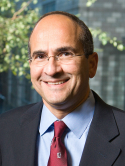Tolerance of tissue transfers to adjuvant radiation therapy in primary soft tissue sarcoma of the extremity Journal Article
| Authors: | Spierer, M.; Alektiar, K. M.; Zelefsky, M. J.; Brennan, M. F.; Cordiero, P. G. |
| Article Title: | Tolerance of tissue transfers to adjuvant radiation therapy in primary soft tissue sarcoma of the extremity |
| Abstract: | Purpose: Treatment of extremity sarcomas occasionally requires tissue transfer in the form of pedicle flaps, free flaps, or skin grafts to repair surgical defects. These tissues are often subject to radiation (RT) and are therefore at risk for wound breakdown requiring reoperation. This study reviews a single center's experience with tissue transfer and postoperative RT. Methods and materials: Between 1983 and 2000, 43 adult patients (>16 years old) with primary high-grade soft tissue extremity sarcomas underwent limb-sparing surgery and reconstruction of their surgical defects, followed by adjuvant RT. The reconstructions were as follows: pedicle flaps (n = 14), free flaps (n = 10), skin grafts (n = 4), or a combination (n = 15). Postoperative external beam radiation therapy (EBRT) (median dose: 63 Gy) alone was given to 27 patients (63%). Adjuvant brachytherapy (BRT) was given to 16 patients (37%); BRT alone (median dose: 45 Gy) was given to 12 patients and combined with EBRT for 4 patients (EBRT: 45 Gy; BRT: 20 Gy). Comorbid conditions such as diabetes, hypertension, tobacco use, and obesity (calculated using body mass index ≥30) were present in 30 patients (70%). Tumor characteristics were as follows: 26 were >5 cm in size, 37 were deep, and 30 were in the lower extremity. The median follow-up time, calculated from the date of operation, was 32 months. Results: Five of 43 patients suffered wound complications necessitating reoperation; however, 3 patients developed complications before initiation of RT and were therefore excluded from the analysis. Two of 43 patients (5%) required reoperation for wound complications after RT; 1 of these patients ultimately required amputation for necrosis. The 5-year overall wound reoperation rate was 6% (95% confidence interval: 0-14%). The influence of patient and tumor characteristics, as well as the type of RT, on the wound reoperation rates is as follows: BRT vs. EBRT (17% vs. 0%, p = 0.06); upper vs. lower extremity (0% vs. 8%, p = 0.41); ≤5 cm vs. >5 cm (8% vs. 4%, p = 0.9); comorbidity vs. no comorbidity (3% vs. 13%, p = 0.8); age ≤50 vs. >50 (8% vs. 4%, p = 0.8). Conclusion: Based on this review, most tissue transfers (95%) tolerated subsequent adjuvant radiation therapy well. Although more wound complications necessitating reoperation were seen in patients who received BRT, whether this is because of the inherent susceptibility of flaps and skin grafts to breakdown in the immediate postoperative period vs. the direct result of BRT needs further investigation. © 2003 Elsevier Inc. |
| Keywords: | adolescent; adult; controlled study; aged; aged, 80 and over; middle aged; surgical technique; major clinical study; surgical flaps; hypertension; adjuvant therapy; cancer radiotherapy; postoperative care; radiation dose; radiotherapy, adjuvant; follow up; radiation; tumor volume; radiotherapy; obesity; smoking; necrosis; sarcoma; postoperative complication; confidence interval; skin; wound healing; wound; body mass; limb; tumors; diabetes mellitus; reoperation; comorbidity; amputation; soft tissue sarcoma; extremities; brachytherapy; surgery; patient treatment; pedicled skin flap; soft tissue neoplasms; skin graft; skin transplantation; calculation; radiation tolerance; beam therapy; humans; human; male; female; priority journal; article; tissue transfer |
| Journal Title: | International Journal of Radiation Oncology, Biology, Physics |
| Volume: | 56 |
| Issue: | 4 |
| ISSN: | 0360-3016 |
| Publisher: | Elsevier Inc. |
| Date Published: | 2003-07-15 |
| Start Page: | 1112 |
| End Page: | 1116 |
| Language: | English |
| DOI: | 10.1016/s0360-3016(03)00200-1 |
| PUBMED: | 12829149 |
| PROVIDER: | scopus |
| DOI/URL: | |
| Notes: | Export Date: 12 September 2014 -- Source: Scopus |
Altmetric
Citation Impact
BMJ Impact Analytics
Related MSK Work







